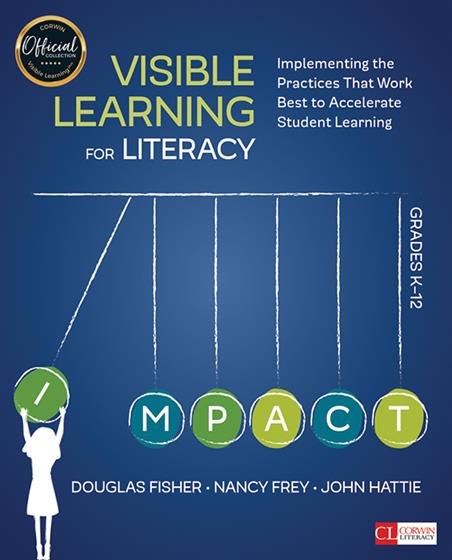
Hands-on, Practical Guidance for Educators
From math,
literacy, equity, multilingual learners, and SEL, to assessment, school counseling,
and education leadership, our books are research-based and authored by experts
on topics most relevant to what educators are facing today.
Bestseller!
Visible Learning for Literacy, Grades K-12
Implementing the Practices That Work Best to Accelerate Student Learning
First Edition
Corwin Official VLP Collection badge
Ensure students demonstrate more than a year’s worth of learning during a school year by implementing the right literacy practice at the right moment.
Product Details
- Grade Level: PreK-12
- ISBN: 9781506332352
- Published By: Corwin
- Series: Corwin Literacy
- Year: 2016
- Page Count: 216
- Publication date: March 29, 2016
Price: $41.95
For Instructors
When you select 'request review copy', you will be redirected to Sage Publishing (our parent site) to process your request.




